The Definitive Guide
This definitive guide will cover everything you need to know about knowledge base software. From the definitions and the pros and cons of different types of knowledge base software, to tips on choosing and designing your own, this guide will answer all your questions about knowledge base software and provide useful links to further resources.
25 min read
|Last updated : 21/05/2025

Many companies are aware of help desk software and the broader category of Knowledge Management Software. While many companies may not yet have heard of knowledge base software, getting to grips with it can provide immense business value.
Knowledge-based software is a distinct category of software in its own right. In this post, we’ll be covering exactly what knowledge base software is, what it’s used for, the benefits of knowledge base software compared to similar solutions, and we’ll provide many links to further information.
Before we dive into the topic, here is the summary of your question
“What are the best knowledge base software in 2025?”The best knowledge base solutions include Document360, Zendesk, Notion, Nuclino, Confluence, Guru, Bloomfire, Zoho Desk, Helpcrunch, Knowmax, and ProProfs. These tools offer robust features for creating and managing your knowledge base, seamless collaboration and making them ideal for internal teams and customer support documentation.
Without further ado, let’s jump in.
Knowledge base software is defined by TechTarget as:
…a machine-readable resource for the dissemination of information, generally online or with the capacity to be put online… a knowledge base is used to optimize information collection, organization, and retrieval for an organization, or for the general public.
That’s the wider definition of a knowledge base, but SaaS knowledge base software has a slightly more specific purpose.
A knowledge base system is a cloud-based tool that helps to create and manage a self-serve online library of information about a product, service, business operations, or any topic. This software simplifies the process of creating internal knowledge bases, customer-facing knowledge bases, or public-facing knowledge bases.
Knowledge base software falls under the discipline of Knowledge Management and the Knowledge Management software category. It is a distinct type of software compared to internal collaboration tools (like Microsoft SharePoint) or other document management tools developed for in-house teams.
The knowledge base software industry is rapidly growing. Knowledge base software is replacing paper writers add-on knowledge bases that are part of the larger help desk software stack, and enterprise Knowledge Management solutions with a prohibitive price tag for businesses.
In our case, knowledge bases are typically sold using the Software as a Service (SaaS) model. They can use knowledge base software to create a self-service knowledge base which provides 24/7 customer support. SaaS customers pay a subscription to access their software over an internet connection. It requires no up-front investment, on-premise installations or ongoing maintenance from the customer.
The number of users of your SaaS knowledge base can potentially scale limitlessly as your company grows.
The first types of knowledge base you will learn about are external, customer-facing documentation sites.
Software documentation is important for the users of software products who are learning how to use the system. It can include installation guides, troubleshooting guides, feature guides, onboarding materials, and more.
Many companies sell products that require assembly or need other information to learn how to use the product. Product documentation schools your users in the art of getting to know the product and reduces the need for contacting customer support.
A user manual is basically a handbook for helping customers understand products and services and usually provides instructions for how to operate the product. A user manual is structured like a book which users can navigate backwards and forwards.
Many customers have Frequently Asked Questions for companies who sell goods and services and the FAQ pages are usually served somewhere on the website. Customers can consult the FAQs whenever they have a query, reducing the load on the support team.
Customers may typically encounter common problems with products, in which case they can be best served with a troubleshooting guide to provide them with solutions. The troubleshooting guide shares different ways of diagnosing the problem and suggests ways of fixing it.
When customers buy a new product they may need to know how to install it on their system. The installation guide contains requirements for the systems and takes the user step-by-step through the installation process.
Secondly, you need to know about internal knowledge bases which are typically aimed at employees in your company.
A Standard Operating Procedure contains all the procedures and processes employees are required to know in order to execute their jobs properly. The SOP takes employees through the steps and shows them the desired outcome as well as necessary requirements.
An employee handbook contains all the information relating to the company such as corporate culture, HR information, benefits, finance, and more. Employees consult the handbook whenever they have a question about working at the company.
Many companies need to document their processes to ensure that they can be duplicated when certain employees are away or leave their jobs. Process documentation makes your company’s processes explicit and helps employees to replicate them.
Projects may have specific documentation that captures the essence of the project, such as meeting notes, goals and objectives, business cases, project schedules, and more. This type of documentation means that anyone coming in to work on the project can get up to speed quickly.
Sales documentation is any type of information that your sales reps need in order to close deals successfully. Sales documentation helps your reps prospect, close deals, and handle objections.
It’s common for most types of companies to have an online knowledge base these days. This is especially true for fast-growing SaaS startups with a large amount of documentation, but the purpose of these knowledge bases can vary.
Knowledge base software usually falls under the realm of customer support and it helps companies with their customer self-service.
If they can direct customers towards a knowledge base that will help to reduce support tickets, your support agents can then spend more time handling complex queries – and less time answering standard questions.
In this case, your company’s knowledge base is usually public and indexable by Google. These also tend to be product knowledge bases intended for self-service, so customers can find your documentation when troubleshooting online. This has a number of benefits for both SEO and marketing.
Knowledge base software can also be used for creating an internal knowledge base. This could be for your support staff to share crucial information about support tickets with each other, or for the benefit of anyone in the company who needs access to a shared information repository.
Your knowledge base can also be made private behind a login page or accessible only through a particular IP address. This is the case for many internal knowledge bases with sensitive information.
Employees can work smarter, not harder, with an internal knowledge base. When they have access to vital information right at their fingertips, this can improve productivity because they don’t have to waste time searching for the right person to answer their question. They know that the company’s knowledge is stored right within the knowledge base, which helps employees understand what they don’t know. Instead of wasting time gathering information, employees can spend more time on business-critical activities that are directly tied to productivity.
Customers who have access to a self-service knowledge base are more likely to be retained over time, because they don’t have to wait around to have their questions answered. They know the company has anticipated their wants and needs, and has provided them with helpful resources needed to provide solutions.
When companies allow customers to use self-service, this improves the support experience overall resulting in happier, more satisfied customers. When customers are assured of a positive support experience, they are likely to return to your company again and again.
Knowledge base software is useful in this case because it has all the functionality you need out-of-the-box. You don’t have to hack together an unwieldy solution like SharePoint or Google Docs. It’s also handy if you already have a ticketing system you feel happy with, and just need some knowledge base software.
Knowledge base software is very useful and it also has unique features that sets it apart from similar types of software like Content Management Systems (CMS).
Most CMS software is designed for blogs, e-commerce sites, or company brand sites (think WordPress or Squarespace). These platforms don’t have the functionality required for them to be a self-service or internal knowledge base. They lack advanced Information Architecture and editorial functionality.
The key features of knowledge base software are the front-end experience for customers, and the back-end of the software interface for users. For example, in Document360 you can collaborate more effectively with other authors through commenting and multiple role permissions.
The front end of your knowledge base is much like a normal website, except with a focus on categories, navigation, and documentation formatting.
Here are the main front-end features:
The back end of your knowledge base should have an editorial workflow, version control, and content organization capabilities.
Here are the main back-end features:
Back-end configuration is how you set up the software for your specific needs.
Here are the main groups of features:
The main differences between knowledge base software and a regular website CMS is the extensive editorial control, organizational capabilities, robust search functionality and formatting for articles.
If you invest in the right knowledge base software it will come preloaded with carefully researched templates that have been designed for content discovery.
Usually you can customise these templates to suit your needs and reflect your company brand. You’ll still need to consider the basics of good design for your knowledge base, such as:
Knowledge base software comes with variations of an in-built template that includes:
These templates are designed with good User Experience for self-service in mind – that means content is clearly laid out, users can discover or search for content, and it’s interlinked appropriately.
Stripe has a fantastic knowledge base to provide inspiration for your own design, and so does Twilio.
Information Architecture is the way that your information is presented, and it also refers to the behind-the-scenes structure that makes your content seem coherent.
Peter Morville defines Information Architecture as:
It’s a combination of meaningfully naming categories and content, and signs or symbols that instruct your user on where they are and where they could go next. It’s distinct from “canonical navigation”, which is the defined order of your content and categories.
Increment Magazine describes it very well:
“The canonical index is the parent-child hierarchy in a table in your database. The information architecture is the visual representation of this structure for users of the knowledge base, and it pulls from the canonical index as the source of truth.”
Your Knowledge base Information Architecture is very important for content discoverability, which is an important subset of the User Experience of your knowledge base. IA empowers users to take charge of their own learning by hinting that there is a coherent structure governing the information in front of them.
Now we’re going to look at some of the top knowledge base solutions in the market.
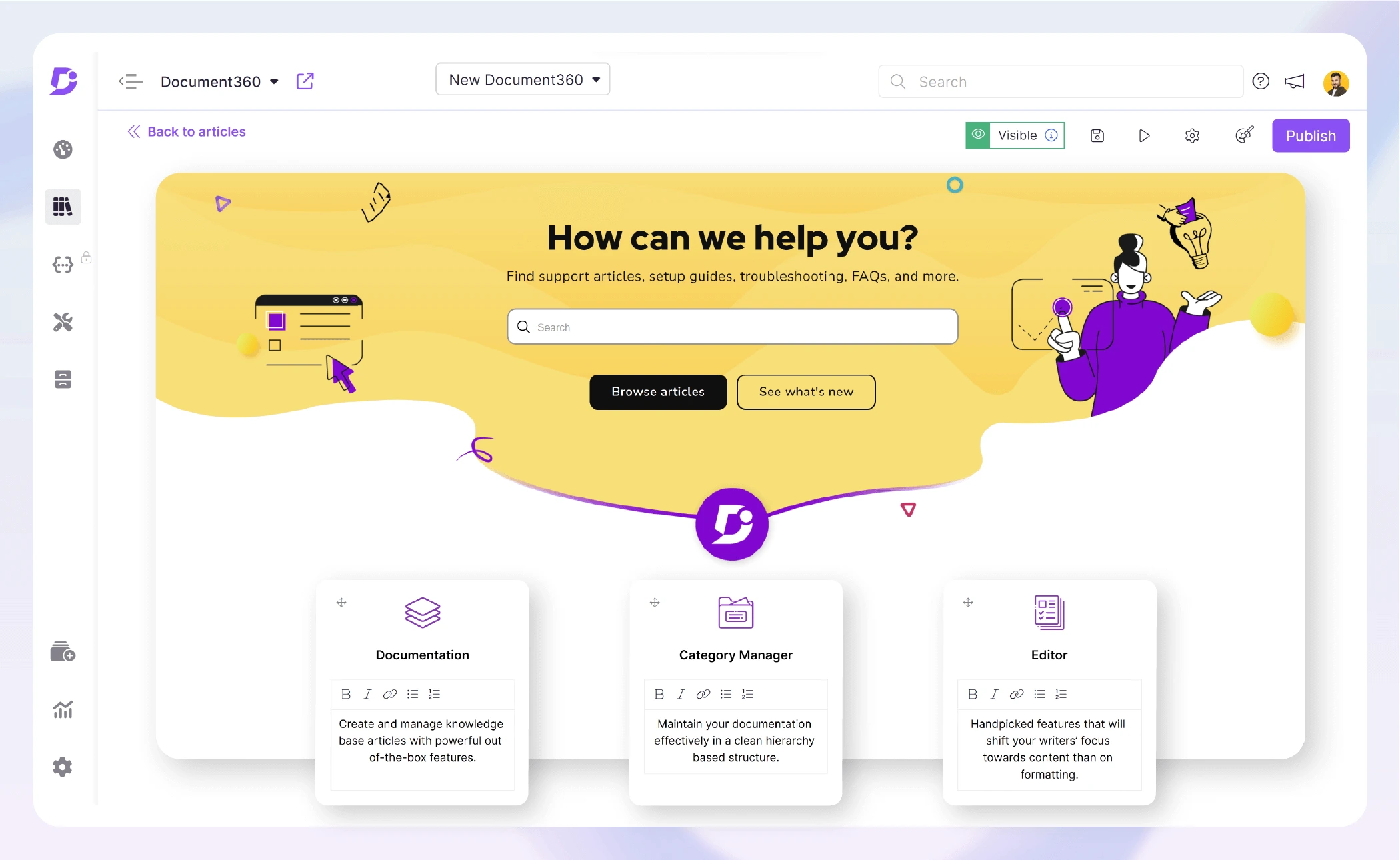
If you’re looking for knowledge base software, then search no further than Document360. Document360 is highly suitable for both internal and external knowledge bases, coming with the core functionality you need right out of the box. Document360 was designed by a team that realized the perfect knowledge base solution was missing from the market. Our AI-powered knowledge base software is an easy-to-use platform that allows you to author content either in Markdown or using the WYSIWYG editor.
You can create a beautiful knowledge base site within minutes that will be appealing to your user base. It’s simple to drag and drop content among different categories and to group content up to six levels deep. An AI-powered search enables users to navigate through content and find relevant articles, even with typos in the search terms.
Where Document360 really shines is its support for authoring. Eddy- AI Assistant can help to generate article titles that allow you to choose or revise article titles, summarize the article to add SEO meta description, recommend related articles to include and recommend tags to use that can organize the content. Content contributors can be assigned different permissions and roles, and there is the capability to flag articles for review. Content teams find working with Document360 empowering, taking them a step beyond more basic tools such as Google Docs.
It integrates with Zendesk, Freshdesk, Slack, Drift, Intercom, Chrome, Microsoft Teams, and many more. Also, you can integrate with any product using Javascript Snippet.
Build a powerful knowledge base your team and customers will love. Try Document360 today.
GET STARTED

Zendesk Guide is another knowledge base tool that comes bundled in with Zendesk. You can use Zendesk Guide to integrate with your help desk system and create articles that are either aimed at customers or your support agents. Although you’ll need to purchase the Zendesk help desk to access Guide, you can create an attractive knowledge base with well-formatted content to appeal to your users. Guide saves your knowledge base history so you can see who has made what changes and when.
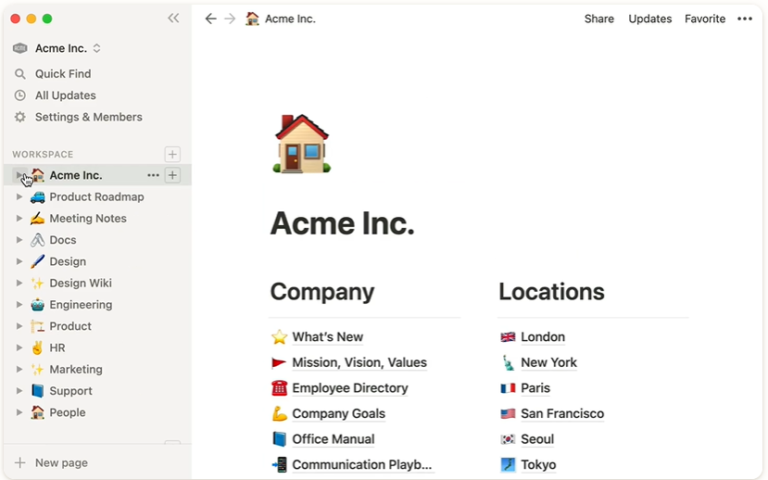
Notion is a well-presented knowledge base software that enables you to host projects, docs, and wikis for access by an internal team. Notion has worked hard on their user experience to make sure users enjoy creating documentation with the Notion platform. You can format your Notion knowledge base in all manner of different ways, making sure your pages are connected and that users can easily discover content. Notion is a fusion between knowledge base and project management software that will help your employees move work forward.
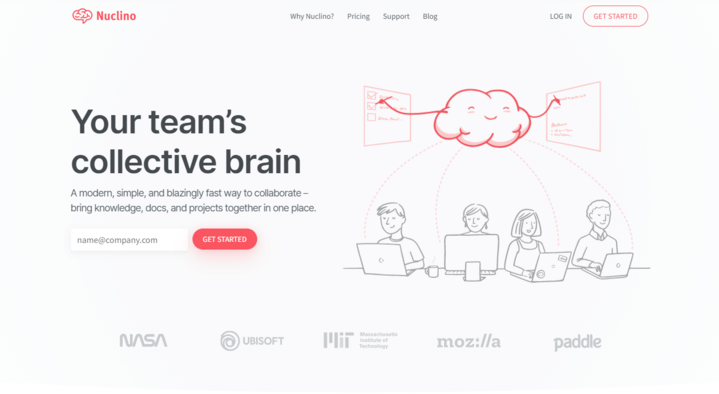
Nuclino is another internal knowledge base software that allows you to bring all your important information together in one place. Nuclino enables you to create docs and manage projects, eliminating the need for multiple tools. Text, images, videos and tasks bring your documentation to life, creating a beautiful user experience for your users. In Nuclino, you can collaborate in real-time, viewing changes as other users type.
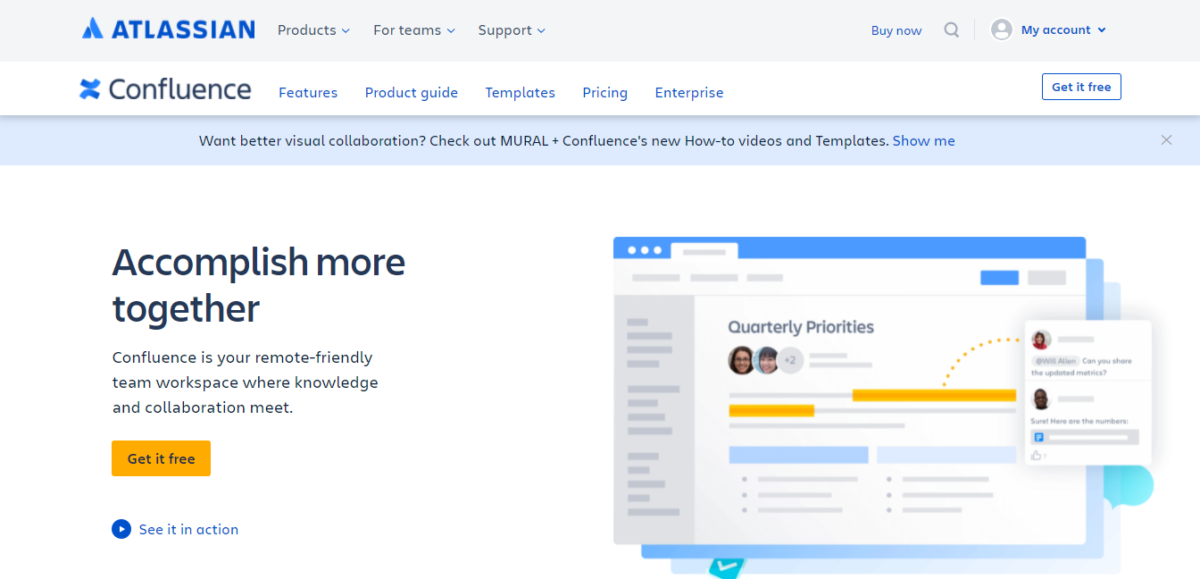
Confluence is Atlassian’s wiki software built for remote teams to collaborate. While at its most basic it is a place for storing knowledge, Confluence actually comes with many features that help you enhance productivity and get more work done. You can create all sorts of documents with elements such as tables, teammate tagging, schedules, and comments, so that documenting your knowledge becomes more interactive.
Compare features of Document360 and Confluence side-by-side and find the perfect fit.
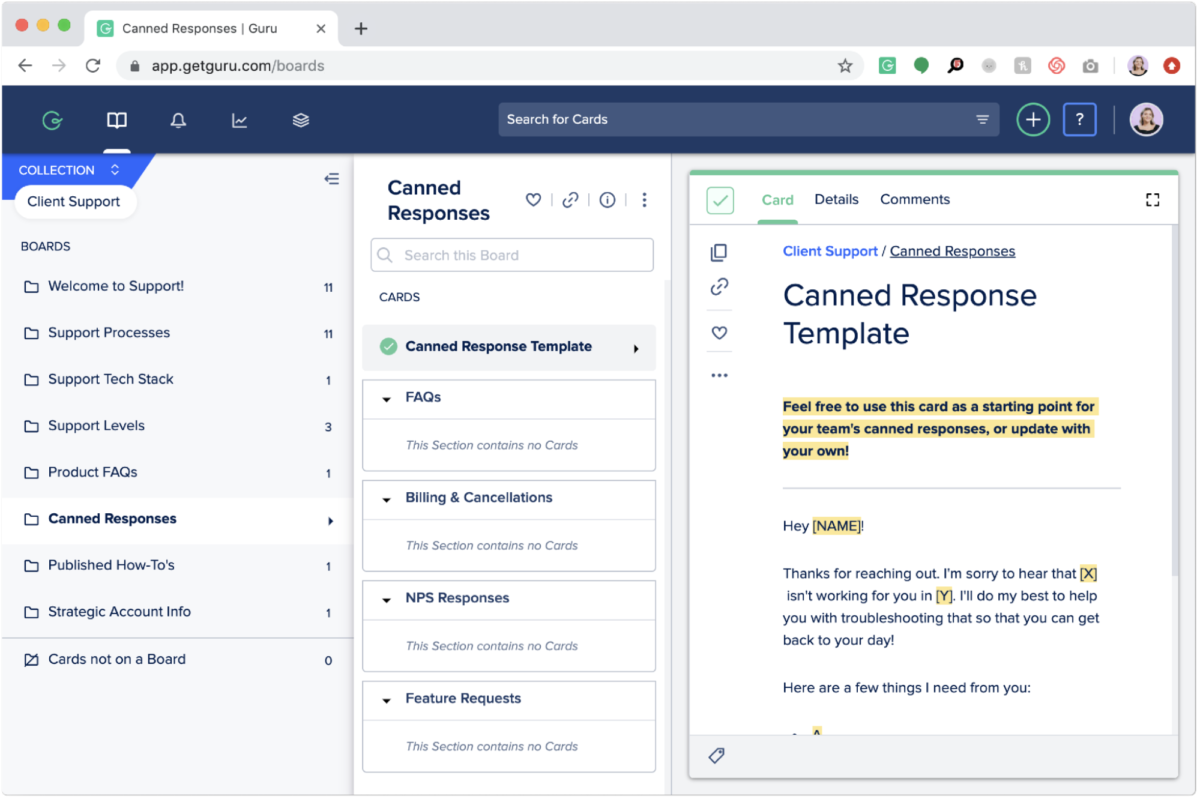
Guru is wiki software that helps you bring all your team’s knowledge together, and focuses on the connectivity of knowledge to show that all your content is inter-related. With integrations linking many popular apps with Guru, it is designed to make accessing information easy and fun. Users can verify content so they know the information you’re consuming is always up-to-date. Guru can be specialized to create beautiful knowledge bases for any team in your company, from marketing to engineering to support.
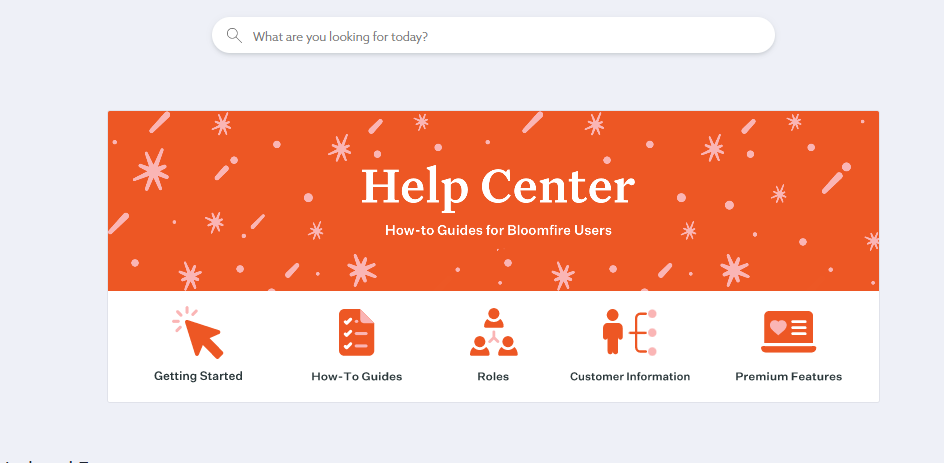
Bloomfire is knowledge base software that aims to reduce silos in your organization by bringing knowledge all into one place. Bloomfire’s search deep indexes every file, including video, meaning that relevant knowledge is always at the fingertips of your employees. Personalized feeds serve up relevant knowledge for users of your knowledge base, so employees can discover content that they weren’t even searching for. Bloomfire treats knowledge as a community-based activity, ensuring that employees are highly engaged with the knowledge base with the ability to ask and answer questions.
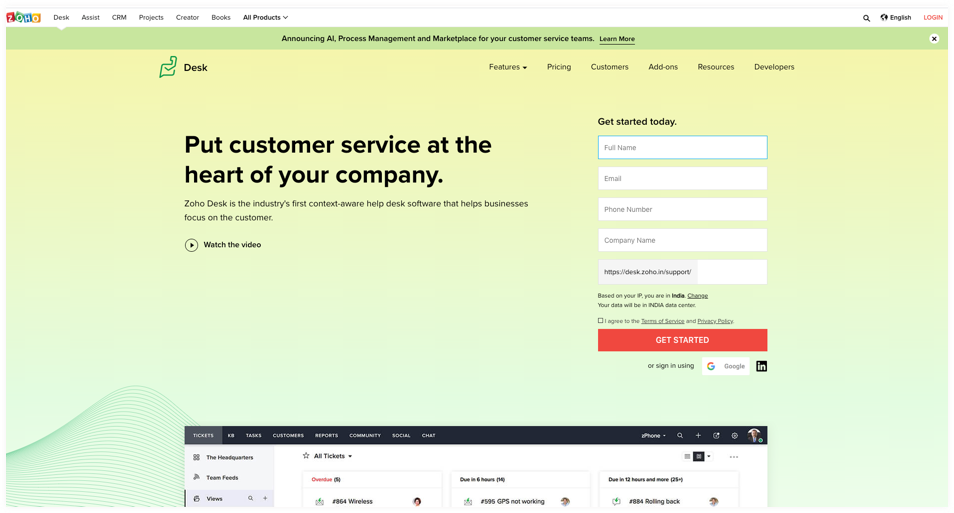
Zoho Desk’s help desk software comes bundled in with a knowledge base that you can use to create self-service content for your users. You can create multiple knowledge bases with customized presentations to create a fully branded help center for your users. Knowledge bases can be made public or private, depending on the nature and purpose of your content. Zoho Desk even offers the ability to create forums and communities so users can help each other with their product questions.

HelpCrunch is another help desk software that offers a built-in knowledge base. HelpCrunch’s knowledge base is simple to use and has the benefit of being integrated with their other suite of products. Their knowledge base is primarily aimed at being customer-facing and reducing the number of tickets that your support team receives. Unlike many other add-on knowledge bases, HelpCrunch offers analytics that help you track the effectiveness of your articles.

Knowmax is a CX-first Knowledge Management Platform that helps you create a single source of truth for your organizational knowledge. The AI-powered knowledge management features help your agents and customers with actionable knowledge in the form of next best actions, visual how-to guides, articles, and FAQs across touchpoints.
With Knowmax’s AI, agents can turn their information search into interactive question answering with precise knowledge sources for each answer. Knowledge authors can scale content by converting static troubleshooting articles into next best actions workflows, repurposing existing content, and generating article summaries hassle-free.
Built-in analytics and reports give you detailed insights into knowledge health, tool activity, search trends, and more. And seamless integrations with your existing CX tools like CRM, chat, telephone, etc, ensure the right knowledge is available to the right people at all times.

Finally, you can also consider ProProfs’ knowledge base, which helps you quickly create a help center for your customers or employees. It comes with several templates that help you design your content and make sure you provide a great user experience. Proprofs offers an impressive suite of integrations, including Salesforce and Slack, making it even easier to create useful content.
There are a number of companies that would like to use software for their knowledge base that they don’t have to pay any money for.
But apart from a free trial for most SaaS solutions, there isn’t really much that you can get for “free” that wouldn’t become rapidly unsuitable for your needs. As the amount of documentation you have grows, free software will prove too basic.
Other software companies claim to offer “free” knowledge base software, but it’s really an add-on for their main product.
Here are the main options:
These options aren’t free because you need to pay for the rest of the software.
Another option is to go for a “free” plugin for WordPress, which you can use if you are already hosting a site. It just adds right on to your WordPress install and you can use the plugin as a knowledge base.
Free software always limited in terms of customization, User Experience and product support. In this case, Information Architecture and the ability to categorise content are useful for a very limited amount of content.
If you have any ambition at all for your knowledge base, “free” is not going to cut it – unless you plan to go open source.
Even if you research your options well, investing in any new software solution is usually a gamble. The advantage of choosing a SaaS knowledge base is that you’re not locked in to a contract. You can often take your software for a free trial before deciding.
To improve your chances of success, make sure you understand the knowledge base software industry and the nature of the exact type of software that you need.
Here are some questions to ask yourself; do you need
Answering “yes” to the last question suggests you need knowledge-based software.
Note down your answers to all of these questions before you research the different solutions out there. They will influence the solution you choose.
Other solutions to consider are:
Open source software is software where you can modify the code, but it isn’t necessarily free of charge. It is actually a philosophy based on collaboration and sharing in whatever domain it is applied.
Opensource.com defines it as:
“The term “open source” refers to something people can modify and share because its design is publicly accessible.”
In our case open source refers to software. There is a range of open source knowledge base software on the market.
The main benefits of open source mean you don’t have to deal with proprietary software models where the code is owned and controlled by someone else. You can access the code directly and modify it, and use that code to make your own knowledge base exactly as you want it.
You’ll host and maintain your own knowledge base without support from the designer of the code – unless they offer support for a fee. This means you will have full control over the software and your data.
You’ll need development resources and time manage this software in-house and ensure it’s up to standard. If your developers are busy then this project may get left by the wayside.
It probably won’t have a WYSIWYG Content Management System for non-developers. This means that every time someone wants to update the content they will need to ask your developers to help them.
Open source software doesn’t usually have the best User Experience design either.
Some companies know they need to invest in knowledge base software, but they’re not sure whether to host their own knowledge base in-house or rely on another company to host it for them.
We’ll explain the two options now.
Self-hosting means you host the knowledge base software on your own company servers.
You’re responsible for the upkeep and maintenance of your software, as well as handling security concerns and fixing bugs if anything goes wrong. This approach can be good if you want more control over security, privacy and uptime.
An on-site software installation is always self-hosted, as in the case of enterprise software as a capital investment. You don’t necessarily own the code you’ve bought, but you are still responsible for the software upkeep. Some companies legally may required to opt for this software model for legal compliance.
Open source software is usually self-hosted, but you also own the software code. Open source software is also often free of charge.
You can develop extensions, customizations, and manage your own data. You have extreme flexibility over your solution, but that also means you need to retain IT resources in-house or outsource to contractors to develop and manage your software solution. This isn’t actually a cost-saving option.
The Software as a Service (SaaS) model outsources some of your IT operations. When you invest in a SaaS knowledge base, you receive a unique login (or number of accounts) and the software is delivered over an internet connection.
SaaS knowledge bases solutions are always hosted by the vendor. You do not have any rights to modify or reuse the code, but you are responsible for all software development, maintenance and fixes.
Even when you know what software you need, it’s also important to integrate your software stack as much as possible.
That’s why many companies that use WordPress as the Content Management System for their main website also want to use WordPress for their knowledge base.
This is because WordPress is relatively easy to use and customizable, and there is a robust ecosystem of WordPress products and developers. You can customize your website by changing the “theme”, and you can use a knowledge base theme such as KnowAll by HeroThemes.
Most companies want their knowledge base to be fully integrated with their main branded site and on the same domain. This is hard to do without a lot of work behind the scenes, and how you set up WordPress also affects the users for your site. Changing your website theme means changing the whole site, so you can’t have your knowledge base on the same CMS as your main website.
You can add a knowledge base to your website using a “plug-in” which is bit like a power-up or a widget. “Knowledge Base for Documents and FAQs” is one example of a knowledge base plugin. Plugins are not as powerful as an actual website.
If you try to do everything within the WordPress ecosystem, this can be limiting and complicated in terms of setup. Eventually, companies that want a really effective knowledge base platform opt for specialist software instead of WordPress customizations.
One of the most important points for any company to understand about knowledge base software is what makes it distinct from help desk software.
Help desk software is defined as a ticketing system that enables large teams of support agents to collaborate on customer support. Zendesk is one example of a popular help desk solution, and so is Help Scout. Help desk software comes with lots of functionality and an accompanying price tag.
Many companies need their knowledge base software to integrate with their existing help desk solution, for example, so they can easily turn tickets into documentation.
That’s partly why some help desk vendors now offer add-on knowledge bases for their customers. Zendesk’s Guide is one example – but you can’t use this knowledge base software without being a Zendesk customer. You have to pay for the full software stack before you can use Guide.
Some companies still allow you to use their add-on knowledge base with to become a full customer, but this software isn’t as sophisticated as a dedicated knowledge base solution.
Dedicated knowledge-based software is cheaper than investing in a help desk ticketing system. It also has the functionality you need for an effective self-service strategy.
Knowledge-based software usually falls under the umbrella of Knowledge Management. Searching for “Knowledge Management software” on the popular review sites means you’ll probably discover many more solutions than for the specific term “knowledge base”.
Knowledge Management is about collecting and curating the internal knowledge of your company so your employees can more effectively learn and share. This is about creating business value and competitive edge.
This classification of knowledge base software has its limits. Many knowledge bases relate to product documentation and are for customers outside the company.
Most knowledge base software also has extra functionality such as support widgets or integrations with popular customer support software, making it unsuitable for classification as Knowledge Management software.
Knowledge Management is a field that also encompasses internal collaboration tools and intranet software. It’s not just limited to knowledge bases. Internal collaboration tools are more about using existing knowledge rather than curating new knowledge, and include tools like Slack or SharePoint.
You should be aware of how knowledge-base software fits into this category, but don’t assume that every tool under the Knowledge Management umbrella is what you’re looking for.
Read more on Internal collaboration tools
Most of us have used Yelp or Tripadvisor to look for somewhere to go for dinner or stay on holiday. Did you know you can dedicate websites devoted to SaaS reviews?
There are several options to choose from, and it’s best to compare them all since each has pros and cons.
Capterra is the one-stop shop for software reviews with more than 300 categories of software. Their interface is very simple and it’s a good introduction to the different software solutions out there.
G2 Crowd has a lot of category options and can be a little overwhelming for beginners. Apart from this, G2 Crowd also publishes software research that compares different solutions in the same market.
It’s worth noting that Capterra, Software Advice and G2 Crowd are owned by the same company!
GetApp is another one of the main software review sites. Its biggest advantage is having a dedicated knowledge base category, which sets it apart from the other sites.
There is quite a large variety of software included within its knowledge base category, including wikis and intranets. Unfortunately, it’s not specific enough to create a meaningful picture.
ProductHunt is a site for startups that want to find better software and focuses heavily on software launches. It’s good if you’re looking to find the latest software products, but it’s not necessarily useful for finding industry staples.
Good reviews are usually around four out of five stars, and they tend to give a detailed and balanced account of what the customer did (or did not) like about using the software.
In many cases, a software solution isn’t suitable for someone, which can lead to frustrated customers giving excessively bad reviews. Remember to take everything in context.
While any type of company can benefit from knowledge-based software, it can be helpful to distinguish between enterprise, startups, and small business customers.
Small businesses are looking for low-cost software solutions on a relatively fixed pricing model. This requires a low capital investment and predictability in financial forecasting. They might want to pay for a set number of users and use the software in a relatively stable way.
Enterprise customers typically need a large number of software users, extensive support and customizations, account management, and compliance. Pricing is not usually as much of a concern, and this means that enterprise software is usually very expensive.
Startups need relatively low-cost software that can scale massively with their company. This means that they need the flexibility to change their number of software users and data bandwidth at very short notice.
Document360 has been developed with all categories of customers in mind and can scale with your business. It comes at a very reasonable price and with a 14-day free trial. You can choose any time to upgrade your plan.
This pricing model is common for dedicated knowledge base software solutions, which makes this type of software affordable for small but growing companies.
We hope you found this guide useful. Remember, it’s all about understanding exactly what your needs are and then finding a software solution that meets them.
Knowledge-based software is a category of its own, but this fact isn’t necessarily reflected in the top resources out there. Do your research and understand the difference between similar types of software, such as wikis and internal collaboration tools.
Take the principles we have outlined above and apply them in choosing your knowledge-based software.
Can’t find the answer here? Get in touch
A knowledge base is a self-service repository or library that stores easily retrievable information on your product, service, or topic.
It is essentially a compilation of your company’s internal or external information that has been organised in such a manner that it may assist workers or customers in finding solutions to their queries or concerns.
The knowledge base may contain FAQs, How-to-manuals, troubleshooting guides, employee playbook, Standard operating procedures, and other informative articles that will be valuable in supporting your team members and customers. It can be used both privately and publicly:
Public knowledge bases contain FAQs, How-to-manuals, troubleshooting guides etc, to assist customers with their queries.
Private knowledge bases are an organization’s internal knowledge bases that employee can use to refer to standard operating procedures and other internal, company-related confidential data.
Chatbots can be integrated with the knowledge base. Chatbots must be fed data to respond to customer queries. When paired with a knowledge base, the chatbot can search the articles for the most relevant answer to the user’s question.